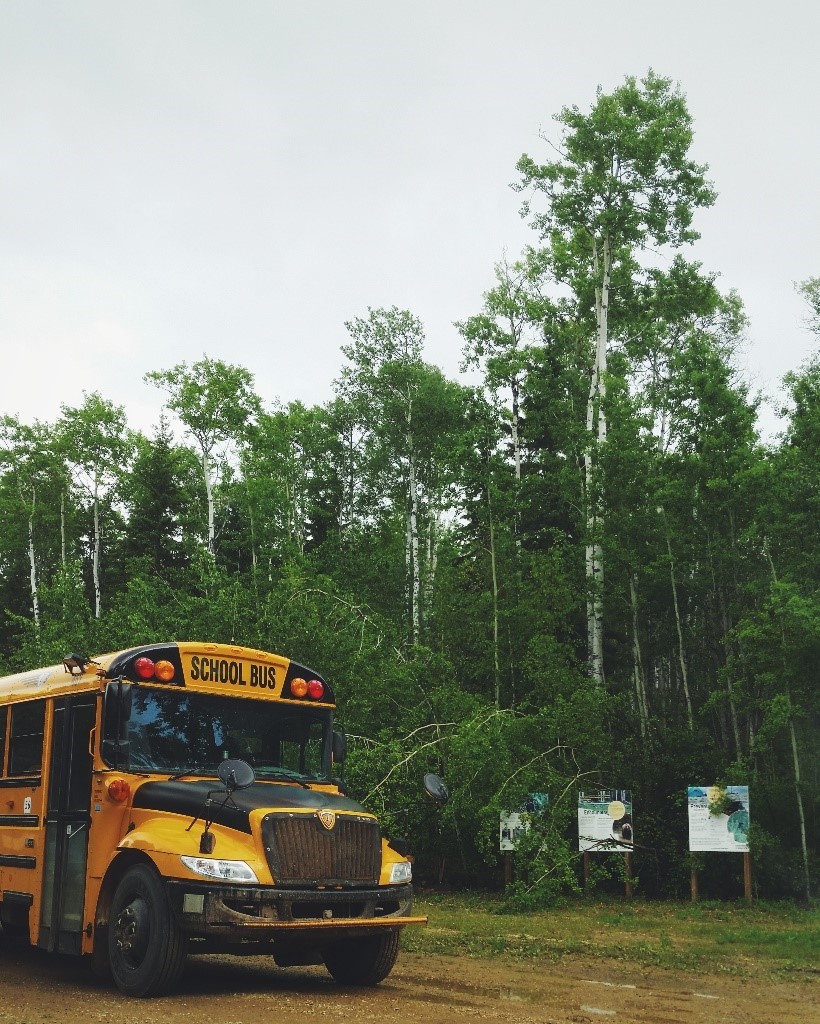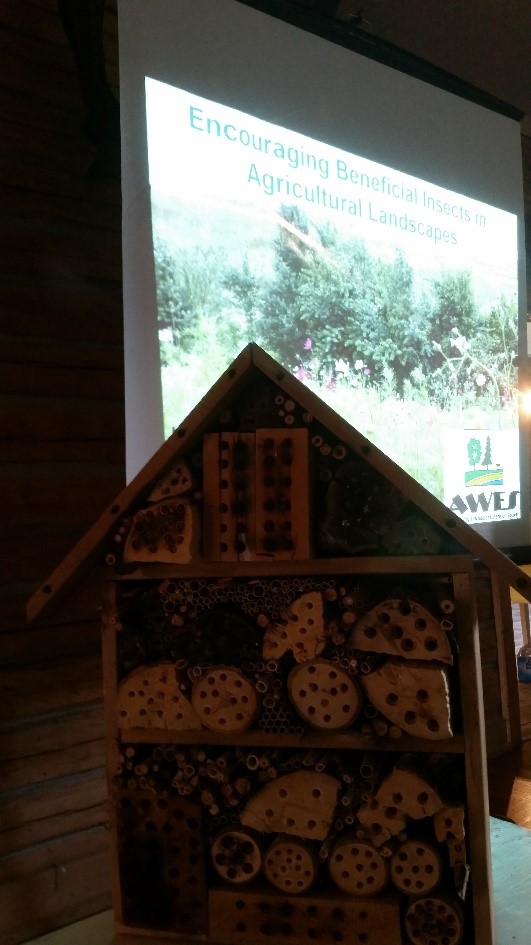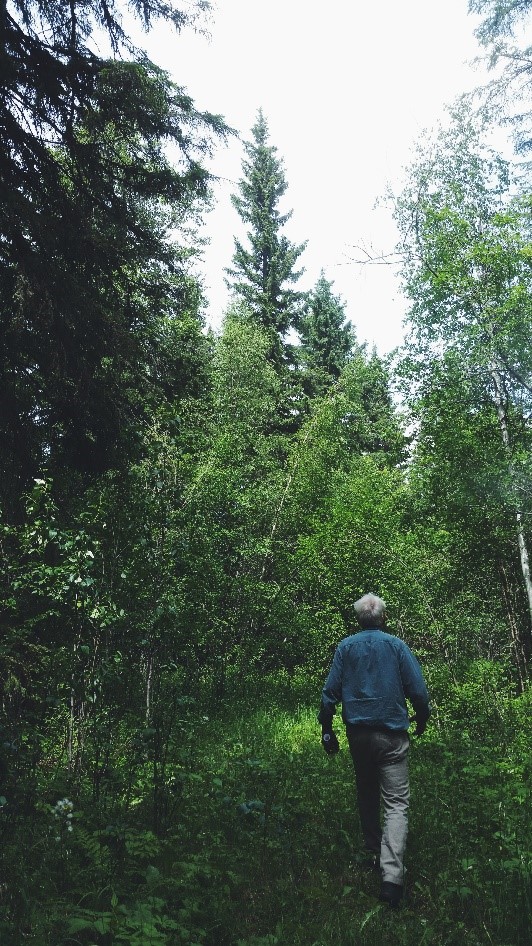Opening Doors
19 juin 2016 17:00 Laisser vos pensées
It sounds cheesy but it’s an understatement to say DMI opens many doors of opportunity for their forestry students. My first two weeks of June consisted of mostly road maintenance, elementary school tours, and a surprise business trip with one of our planners to the AWES AGM. A large part of the first half of the summer requires weeks of road preparation before the summer haul can start in July, this entails bucking up and clearing all of the right-of-ways haul roads (especially big job this year with the heavy snow fall from May long weekend), and of course graveling the roads. In between this road maintenance, one of the annual community services we provide are nature trail hikes for the elementary students learning about the Boreal Forest.
The Alberta Junior Forest Wardens established this Interpretive Trail at Leddy Lake, AB just north of Peace River in 1994 for the Mackenzie Forest Education Society. This trail and its education posts are maintained by DMI. Along this 2 km trail there are 19 stations that we stop along to talk to the grade six students, from across the Peace Region, about all things Boreal Forest. This includes forest succession, wildfires, animals, bugs, plants, bear safety, watercourses, soil, and Boreal Forest fun facts. As a student myself it can be quite fun to share my enthusiasm and knowledge with the next generation, and they keep you on your toes with our plant IDs and their questions. They even show us up sometimes. This is a unique opportunity that DMI provides, that helps build strong community interaction skills, an important skill when managing Alberta’s forests.
Another unique opportunity we as students got this past weekend was a special invite to join our planner Mikel Jackman on trip to central Alberta to attend the AgroForestry and Woodlot Extension Society’s annual general meeting. Mikel is the president on the board and DMI is a partner company. As a science student having just completed my second year and transferred into University of Alberta’s forestry program, I had not had much experience with Agroforestry or woodlots so I didn’t have much of an idea what was in store. I was honored to meet and sit in on a round table surrounded by passionate foresters, agriculture representatives, woodlot owners, and community members. It opened my mind to areas I had not considered yet, listening to their discussions about the importance of woodlot management or trees in agriculture. The views between often varied but it was refreshing to see a group discuss these difference of opinions so openly and respectfully, but one thing was clear in their frustrations… Prevention is the dream as opposed to reclamation, allowing nature to heal itself. I couldn’t agree more, and it was inspiring to see a diligent group work towards this on top of their fulltime careers.
How do they make this dream a reality though? Education. Like the photo above of the presentation AWES gave us after the meeting, they put on many workshops around Alberta regarding a wide spread topics including watercourses, grazing, tree planting, Eco-buffers, and Pollinators. They fill their website with priceless information, guides and resources that have been accessed internationally. Aside from workshops they do get contracted to aid in reclamations or consult farmers and woodlot managers on beneficial management practices. The presentation we received taught me incredible things about pollinators and pest suppressors, and the relationship the environment we yield can mutually beneficial for pollinators and humans. For example, one study mentioned giving up 8% of productive land (rapeseed, wheat, and field bean rotation) to habitat [for pollinators] increased overall yields over 6 years (Pywell et al., 2015).This is done through eco-buffers and shelter belts that are designed with native diverse plants to encourage and cater to some of the 300+ native Alberta bee species, as well as other insects on top of that 300. Sounds a bit like our retention patches in DMI’s cutblocks, we keep coming back to them!
Thank you for reading this week’s blog, I could go on forever about the information and write four more pages about the fun we had on the woodlot tour. Email if you want to any more information.
Cheers,
Bailey Robinson
P.S. I welcome you to check out the following event and websites, and if anything sparks your interest PLEASE get involved and remember…
“When you kill off the natural enemies of pests, you inherit their work” – C. Huffacker
Green Acreages is a program that allows acreage owners to access funds for environmental enhancement projects. Their next workshop for this is Wednesday June 22nd 6-9pm, Pine Lake Christian Camp, Red Deer, AB. For more information, please check out their website.





